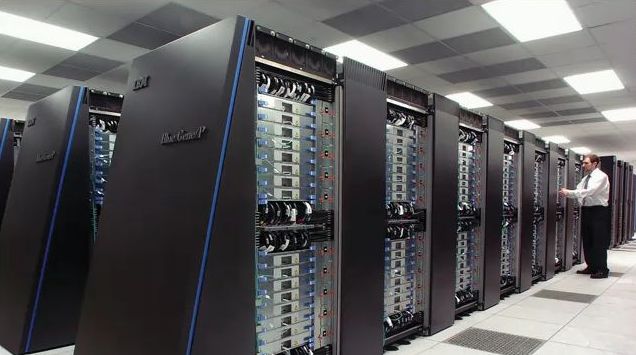History of Computers - Blue Gene

Introduction
Blue Gene is an IBM project that created three generations of supercomputers. The aim of the project was to design supercomputers that could reach operating speeds in the petaFLOPS range with low power consumption.
Overview
Blue Gene produced three generations of supercomputers, Blue Gene/L, Blue Gene/P, and Blue Gene/Q, and its systems have frequently topped rankings of most efficient and powerful supercomputers. This project has had various applications, including simulating one percent of a human cerebral cortex, being the central processor for the Low Frequency Array for Radio Astronomy, and being part of a federated high performance computing cloud. Blue Gene succeeded at running complex artificial neural networks, and it will continue to serve as an example for future supercomputers. Development of Blue Gene systems seems to have stopped as of 2015, though there has been no comment from IBM to indicate that such is the case.
IBM first announced the project in December of 1999; Blue Gene began as a five-year, $100 million research effort to build a parallel computer for biomolecular studies such as protein folding. Initial work on Blue Gene was led by William Pulleybank and based at IBM T.J. Watson Research Center. Unique features of the first supercomputer, Blue Gene/L, included trading processing speed for lower power consumption, embedding all node components on a single chip, a large number of nodes and dual processors per node, and lightweight operating system.
Unveiled in June of 2007, Blue Gene/P was a collaboration of IBM, Argonne National Laboratory’s Leadership Computing Facility, and LLNL. Installations of Blue Gene/P included the 36-rack “Dawn” at Lawrence Livermore National Laboratory, a 6-rack at Rice University, and the 40-rack “Intrepid” at Argonne National Laboratory. Blue Gene/P has had various applications, including being used as a practice opponent for the challenger to the 2010 World Chess Champion title and as a federated high performance computing cloud.
Blue Gene/Q, the third supercomputer in the series, reached a peak performance of 20 Petaflops, expanding and enhancing the architectures of Blue Gene/L and Blue Gene/P. In June of 2012, Blue Gene/Q ranked first as the most efficient and powerful supercomputer.
Significance
Around the world, installations of Blue Gene systems are proving themselves valuable additions to research projects. Systems have contributed to projects such as mapping the human genome, replicating brain power, flying airplanes, simulating radioactive decay, predicting climate trends, and identifying fossil fuels. Blue Gene supercomputers are still among the top most efficient and powerful supercomputers, and new developments of existing architectures have the potential to further increase computing power and provide means to pursue more complex applications in the future.
References
http://www-03.ibm.com/ibm/history/ibm100/us/en/icons/bluegene/
http://www-03.ibm.com/systems/technicalcomputing/solutions/bluegene/
https://www.research.ibm.com/bluegene/press_release.html
https://www.cnet.com/news/ibm-details-blue-gene-supercomputer/
https://asc.llnl.gov/computing_resources/bluegenel/
https://www.alcf.anl.gov/files/IBM_BGQ_Architecture_0.pdf
http://www.nersc.gov/assets/Uploads/IBM-Blue-Gene-Architecture.10-10-11.pdf